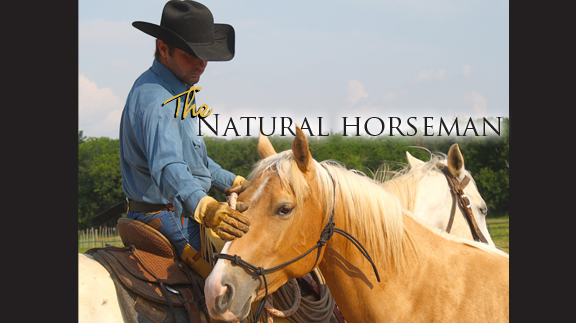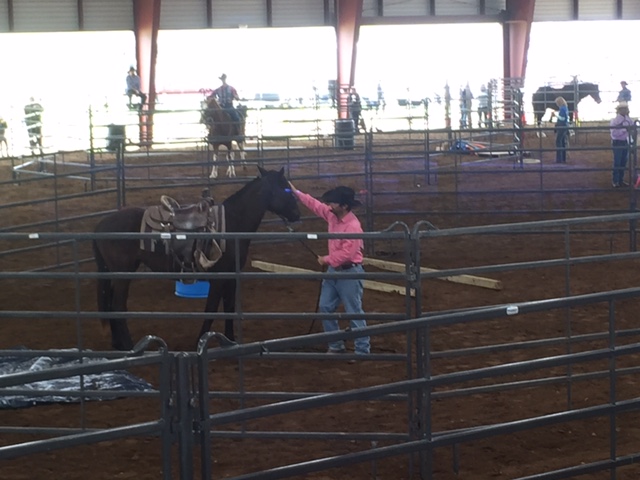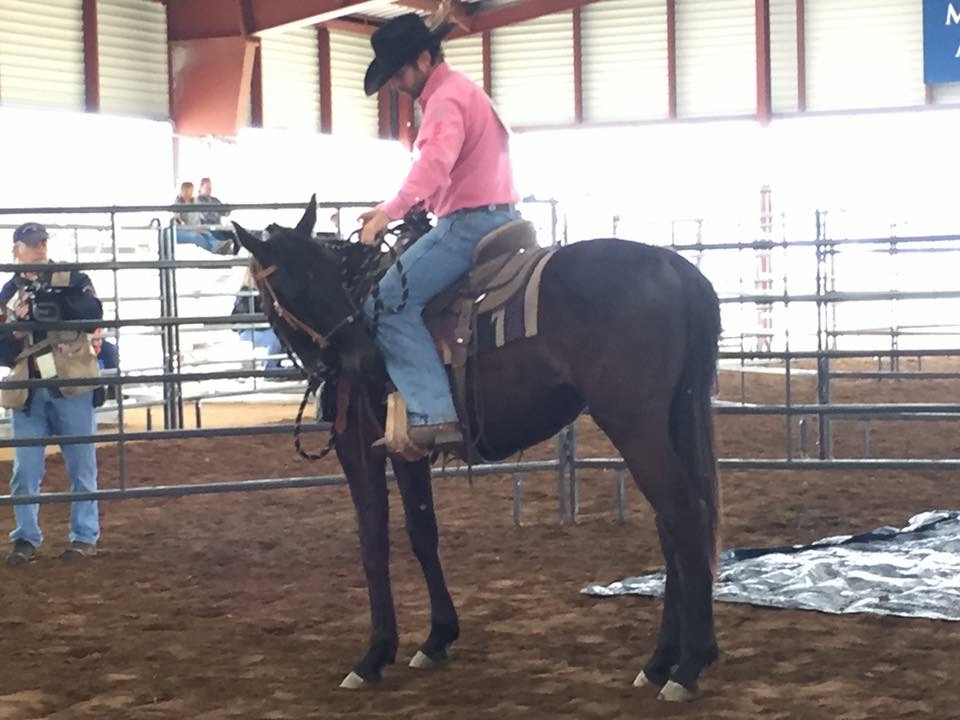HOME
The Natural Horseman – Staying the Course

By Steve Stevens
I am sitting at Ronald Reagan National Airport in Washington, DC. It is 3:30 in the morning, and I am waiting for a 5:30 a.m. flight. I just came from competing in the Colt Starting Challenge USA competition in Doswell, Virginia, at the Virginia Horse Festival. I ended up finishing second place with a two and a half year old Warmblood named Quest. This was an interesting one for me because Quest was by far the most nervous horse I have had at any of the colt startings.
When I got to work in the first round, it became evident that he wasn’t going to be easy. To start, I could hardly touch him and I was concerned I wouldn’t be able to get him saddled. But I just worked away with just rubbing and releasing and before long I got him saddled. He was real tight. I just kept reminding myself to be there for him and he started to free up. Every time I stepped up in the stirrup I could feel his body tense up. So I would step up and back down again. I kept doing this until I felt him take a breath. I went through that process for a while until it finally came time to take a deep seat and see how it turned out.
As long as I kept moving, rubbing him, rocking my hips back and forth, he seemed to be all right. He actually moved out pretty good. The time ended quickly for the day and I knew I didn’t get nearly enough accomplished for the competition. In the grand scheme of things he had made huge leaps and bounds. I needed to let it go and hope that he would continue growing tomorrow.
I got to check out Fredericksburg, Virginia, a little bit that evening. I feel it is always important to allow my horse journey to help me take advantage of exploring places I have not seen, especially historical and beautiful places to keep me grounded. The history there was amazing. To stand where our founding fathers stood and fought for our great country was pretty special.
The second day Quest came around quickly. I had to watch him, though. He needed a lot of leadership. Anytime I got distracted I could feel him distancing himself. I couldn’t have been prouder of him. It was less than three hours ago that he was scared to be touched. It is really incredible that horses can allow us to ride them. As I kept working away, I thought a lot about the horses that had carried soldiers through battles in the area. It should always be such an honor to ride a horse after what they have done for our country. I went into the final round in first place. Quest got a little herd bound to the other horses once he was in the arena by himself. He never concerned me, but he was hard to maneuver around the arena.
We got through all the obstacles, dragging a log, throwing a rope, and other tasks. This little Warmblood tried his heart out for me. He had a big heart and I am glad that I was the first human on his back. I learn something every time I work a horse. Quest taught me the importance of staying the course and just working away. He made it through. It was an amazing weekend. It is time to catch my flight back to Texas. Have sweet dreams, my dear friend Quest.
Farm & Ranch
Acorn Toxicity

By Barry Whitworth, DVM, MPH
With the prolonged drought, most pastures in Oklahoma end up in poor condition. With the lack of available forage, animals may go in search of alternative foods.
If oak trees are in the pastures, acorns may be a favorite meal for some livestock in the fall. This may result in oak poisoning.
Oak leaves, twigs, buds, and acorns may be toxic to some animals when consumed.
To read more, pick up a copy of the November edition of North Texas Farm & Ranch magazine, available digitally and in print. To subscribe by mail, call 940-872-5922.

Farm & Ranch
Silver Bluestems

By: Tony Dean
There are a handful of grasses on North Texas grazing lands ranchers need to know, not because they are highly desirable, but rather because they are not of much value. I call them “decom” plants, which is am acronym for “Don’t Ever Count On Me.” Silver bluestem is a “decom” grass.
Silver bluestem is a perennial which grows in all areas of Texas. It can survive in almost all soil types, and in full sun conditions or in semi shade. It grows up to three feet tall and is easily recognized with the presence of the white fuzzy seed head. Also, one of the identifying characteristics of Silver bluestem is a bend in the stems at each node, causing the plants to take on a rounded shape as they mature.
To read more, pick up a copy of the November edition of North Texas Farm & Ranch magazine, available digitally and in print. To subscribe by mail, call 940-872-5922.

Farm & Ranch
Meanwhile Back At The Ranch

By: Rayford Pullen
Fall is here which means winter is closing in on us and before we officially get into winter, we need to make sure our factories are either producing or will be producing in a few months.
We have been pregnancy testing our cows this fall and if they are not bred or nursing a calf, we are bidding them adios. With annual costs somewhere between $900.00 and $1,000.00 per cow, those cows not producing a live weaned calf are costing us quite a bit.
To read more, pick up a copy of the November edition of North Texas Farm & Ranch magazine, available digitally and in print. To subscribe by mail, call 940-872-5922.
-

 Country Lifestyles2 years ago
Country Lifestyles2 years agoScott & Stacey Schumacher: A Growth Mindset
-

 Country Lifestyles8 years ago
Country Lifestyles8 years agoStyle Your Profile – What your style cowboy hat says about you and new trends in 2017
-

 HOME8 years ago
HOME8 years agoGrazing North Texas – Wilman Lovegrass
-

 Equine1 year ago
Equine1 year agoThe Will to Win
-

 Country Lifestyles5 years ago
Country Lifestyles5 years agoAmber Crawford, Breakaway Roper
-

 Outdoor9 years ago
Outdoor9 years agoButtercup or Primrose?
-

 Country Lifestyles8 years ago
Country Lifestyles8 years agoJune 2016 Profile – The man behind the mic: Bob Tallman
-

 Country Lifestyles8 years ago
Country Lifestyles8 years agoDecember 2016 Profile, Rusty Riddle – The Riddle Way






